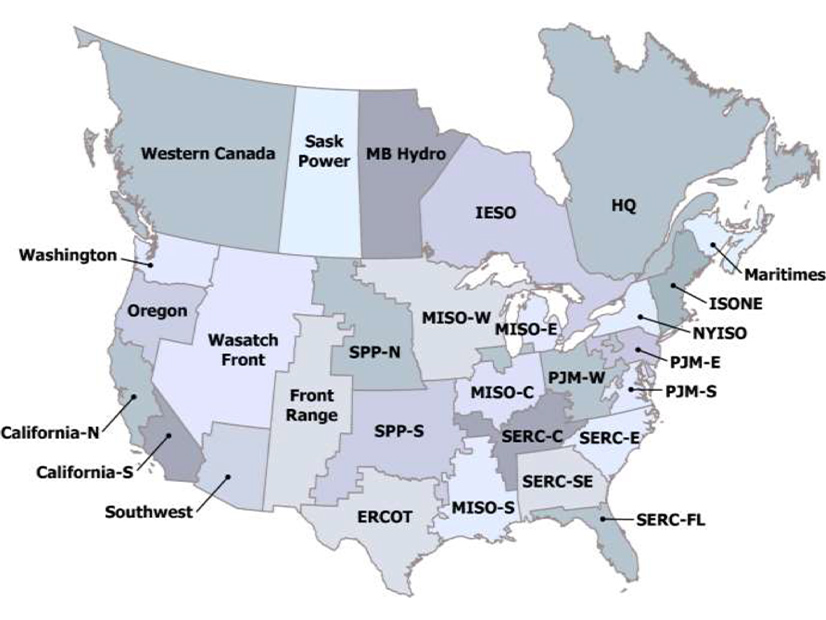
NERC last week published an overview of its work on the Interregional Transfer Capability Study (ITCS), laying out the overall strategy and technical approach for the project and outlining the documents to be released beginning this August.
The Overview of Study Need and Approach reviews the work done on the ITCS since Congress ordered the study in last year’s Fiscal Responsibility Act. The law requires NERC to deliver to FERC by December a study on the total transfer capability between neighboring regions, additions to transfer capability that could strengthen grid reliability, and recommendations to meet and maintain total transfer capability.
Work on the ITCS began after FERC approved the ERO’s plan for funding the study last August. (See FERC Approves NERC Transfer Study Funding Request.) NERC is in overall control of the study through the ERO Executive Leadership Group, which is led by NERC Chief Engineer Mark Lauby, with participation from leadership of the regional entities. The ERO also formed the ITCS Advisory Group in the early days of the project to give industry stakeholders input into the project’s direction. (See SERC to be ‘Well Represented’ in ITCS Group.)
In the overview document, the ERO emphasized the “unprecedented” nature of the task assigned by Congress, calling the ITCS “the first comprehensive study of transfer capabilities between adjacent transmission planning regions [that] will use 12 years of data, capturing a wide variety of operating conditions and historical weather events … to determine potentially deficient areas.”
Congress required that NERC base the ITCS on transmission planning regions identified in FERC Order 1000. The project team has further subdivided these regions in some cases “to provide more granular analysis of transfer capability limitations, especially under specific weather scenarios.” NERC said this approach was necessary because some of the planning regions, particularly in SPP, covered large geographic areas with significant internal transfer constraints.
According to the overview document, the ITCS report will consist of three documents. Part 1, to be issued in August, will present a transfer capability analysis for 2024 and 2033, covering both summer and winter for each year. Total transfer capability will be calculated “by determining the amount of additional transfers that can be added to base transfers already modeled while respecting contingency limits,” and will comprise two parts:
-
- Base transfer level, indicating “scheduled power flows between areas in the starting case.”
- First contingency incremental transfer capability, which simulates the amount of extra power that can be transferred during an unexpected event.
NERC will use the transfer capability limits between each neighboring region as a “critical input into Part 2,” which will be published in November. The goal for Part 2 is to identify conditions in areas that might experience energy deficiencies, such as extreme weather scenarios; determining areas where deficiencies are severe enough to justify additions to interregional transfer capability; and “prioritizing interfaces for transfer capability increases.”
The ERO will limit its recommendations to target megawatt ranges of transfer capability and will not recommend any actual transmission projects to meet its targets.
Under Part 3, which will be published in the same document as Part 2, NERC will provide recommendations to meet and maintain transfer capability based on the results of the transfer capability and energy deficiency analyses in parts 1 and 2 respectively. These may include further studies to measure progress addressing risks and ensure that recommended additions can be maintained reliably, technology that may address transfer capability limitations, and enhancements to regulatory mechanisms, policies or standards.
Congress mandated that the ERO study transfer capabilities only within the U.S.; the documents submitted to FERC this year will focus on the U.S. However, NERC said in the overview that it already concluded the study “would be incomplete without a thorough understanding of the Canadian limits and available resources.” Transfer capabilities between Canadian provinces and from the U.S. to Canada therefore will be the subject of a fourth report, to be released in the first quarter of 2025.


